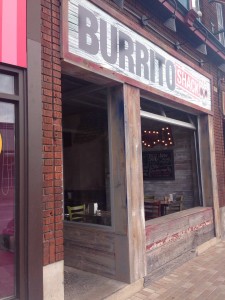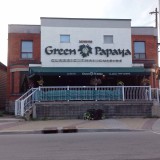
“When the inspector came in, [they saw that] we do our own jalapeños we pickle them, and they go in to a big Rubbermaid container and the Rubbermaid container was sitting on the floor rather than up a milk crate,” says Dominic Donato owner of Burrito Shack on 775 Bank Street in Ottawa. Donato’s restaurant is one of the 253 places written up for the FWA restaurant inspection code by Ottawa Public Health between January and May of this year.
The FWA code means that the floors, walls, and ceilings of a restaurant have to be clean and in good repair, as noted by the Health Protection and Promotion Act.
Restaurants in Ottawa are cited most often for the FWA code, almost 600 times more than the next closest code since 2009. There are also over 1800 more instances of this code than the third highest, according to Ottawa Public Health.
Donato said his employees are to blame for the code infraction in May.
“Most employees think that because it’s in a food-safe Rubbermaid container that it’s fine because the base of it is hard shelled to sit on the floor. So they don’t realize that in the eyes of the inspector that that’s considered an infraction,” said Donato.
The reason that the code shows up so often isn’t necessarily the restaurants’ fault, says Blayr Kelly, a supervisor in Ottawa Public Health’s Environmental Health Protection Branch. It may be the fault of the code.
“Floors, walls, and ceilings covers a lot. If you think about it, it’s the entire premise from the time we walk in to reaching the far back corner of the building,” said Kelly.
The code is quite broad, which makes it more likely that a restaurant will be cited for it.
“It’s not just a one single pinpoint issue. So it’s not surprising to us that that would be the most common code,” said Kelly. “It is a deficiency or an infraction or an observation that can almost be expected to be on a report.”

Vincent Gobuyan, owner of Green Papaya on 256 Preston Street, was also cited for the FWA code in May.
“It was a leak in the plumbing in the basement below the kitchen and it was just overlooked,” says Gobuyan.
He said he is not surprised at how much more common the FWA code is, compared to other codes, because it is about the building rather than the food itself.
“A restaurant is always susceptible to things like that because it’s overworked as a building, certainly there’s wear and tear on certain things,” said Gobuyan.
Despite this code being so common for restaurants when they are cited, it is not likely to close down restaurants or pose a serious risk to anyone, said Kelly.
“It’s not something that’s necessarily going to make anyone sick, but it’s something that’s going to require attention for the overall general sanitation for the premises,” said Kelly.
The walls and ceilings don’t pose as much of a problem as floors do in order for restaurants to pass the code, said Donato.
“It’s the floor thing that everybody has a hard time with,” said Donato. “Because most people don’t realize in the eyes of an inspector if you have an open case of pop, and one pop is sitting on the floor, that’s still an infraction.
These restaurants are inspected by a variety of health inspectors who are all looking for different things, which makes consistency difficult.
“There are 22 health inspectors that have written it down for their own reason or observation,” said Kelly.
Donato said that in his three decades in the restaurant business, he’s had 50 different inspectors. “Some of them are just more strict than others,” said Donato.

